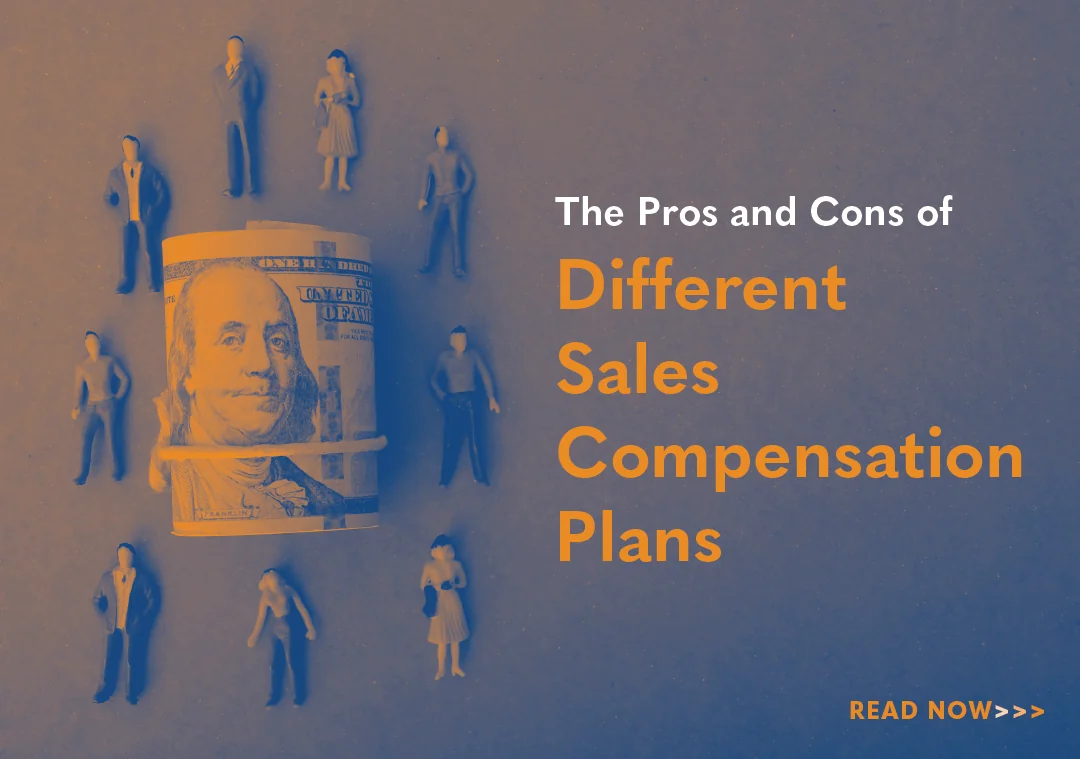How to Conduct a Midyear Pipeline Review

For salespeople, summer can bring the doldrums. As temperatures rise, activity can fall. Contacts are difficult to reach. Decision makers seem to disappear. And once promising deals can slow like weekend beach traffic.
However, summer, or the Q3 blues, does not have to mean sales stagnation. In fact, summer is a great time for a midyear pipeline review. At this point, organizations have enough data from the first half of the year to reconsider forecasts. And they have time enough to course correct. This includes revisiting and refining sales strategies to ensure they achieve year-end goals.
But this should not be a perfunctory assessment. It’s not something to do while your sales team practices office putting or plows through PTO. Instead, it’s a comprehensive reevaluation of your pipeline. This includes identifying which deals are likely lost and which are promising. And, most of all, it’s defining the specific steps salespeople can take to bring them to close. Here, we’ll examine why and how sales organizations should conduct a midyear pipeline review.
The Importance of Midyear Pipeline Review
In today’s sales landscape, deals are increasingly complex. This makes selling more of a marathon than a sprint. Of course, everyone kicks off a sales year with high expectations. But we all know what happens to the best laid plans of mice and sales professionals. That’s why a midyear pipeline review is essential. It’s a real-time reality check of where you are and where you are going, providing insights into:
- Current performance, based on the targets and KPIs set at the beginning of the year
- Gaps and opportunities, such where your pipeline may be lacking as well as opportunities for growth
- Strategy refinement, based on real-time data and market conditions
- Forecasting and goals, including setting ambitious but realistic objectives for the remainder of the year
Challenges
Of course, a midyear pipeline review can present several unique challenges. These can include:
- Reduced availability
- Data accuracy
- Poor visibility
- Increased competition
- Market uncertainty
According to Time magazine, office attendance drops during the summer. For example, in the summer of 2023, 5.4 million US workers missed part of a work week. This was a 6% increase from 2019, the last pre-pandemic summer. With more people out, it can be difficult to align the schedules needed for assessment.
Data accuracy is always a challenge. This can be exasperated in the summer months due to poor attendance or decreased engagement.
Often, there is reduced CRM-related activity in the months leading up to and during the summer. This can make it harder to monitor deals, determine lead statuses, and accurately forecast.
External factors, such as changes in the competitive landscape, can influence deals in progress. This can include decreased visibility into what’s happening outside your organization.
Other external factors can include economic conditions and industry trends. These too can impact sales projections and forecasting.
Benefits
Despite these challenges, sales organizations can gain a lot from a midyear review. Data Axle cites the following winning pipeline statistics:
- Organizations with accurate pipelines are 10% more likely to grow year over year.
- Organizations that effectively manage their pipelines have a 28% higher revenue growth rate.
Yet, according to HubSpot, 40% of businesses fail to meet revenue goals. This is a main indicator that you need a set process to manage your pipeline.
Essential Steps
With that, let’s examine the steps needed for a comprehensive pipe review.
Gather Data and Metrics
For a pipeline review, start by gathering quantitative and qualitative data included in your CRM. Key metrics include:
- Pipeline Velocity: This is how quickly leads move through the opportunity stages. It is critical to measuring the efficiency of the sales process.
- Conversion Rates: The percentage of leads and prospects that progress through key milestones during their lifecycle. This shows how effective your sales organization collaborates to turn leads into customers.
- Win Rates: The percentage of closed deals versus opportunities in a specific timeframe. It is critical for identifying deficiencies in the sales process.
- Deal Size and Value: ACV, or average contract value, is the amount customers spend on a solution. This shows the average deal size and the total value of that deal to your pipeline. In short, it’s how much money organizations make per deal.
- Lead Sources: This shows where leads originate. For example, through website traffic, marketing campaigns, trade shows, or referrals. This is central to understanding the specific buyer’s journey. It allows organizations to personalize content, increasing the likelihood of conversion.
Review Your Sales Funnel
A sales funnel is the journey potential buyers take. It starts when they take an interest in your product or services. And it concludes with either a closed-won or closed-lost deal.
Of course, sellers must understand a potential buyer’s place in the funnel. This determines the activities necessary to boost awareness, understanding, and interest. These keys build relationships and provide a greater customer experience.
For a pipeline review, sales organizations must evaluate the stages of their sales funnel. This can reveal how they’re performing in the following crucial areas:
- Prospecting: How many leads enter the pipeline? What is the quality of these leads?
- Qualification: Are leads being properly vetted and qualified before moving forward?
- Proposal and Presentation: How effective are your sales proposals and presentations?
- Closing: What are the barriers to closing deals? What are the most common objections? Are you losing deals in the opportunity stages, despite a higher propensity of being closed?
Assess Sales Team Performance
All processes are only as effective as the people tasked with implementing them. Therefore, a pipeline review requires assessing individual and team performance metrics, such as:
- Activity Level: The number of calls, emails, and meetings per representative.
- Performance Against Targets: How many team members meet or exceed quotas?
- Sales Skills and Training: Identify areas where additional training, coaching, or support may be required.
Most sales teams are divided among three tiers:
- Top producers, those who consistently exceed quota
- Core producers, those who meet quota
- Strugglers, those who often fall short of quota
Of course, from this, sales managers should do more to raise core producers to top producers. A LinkedIn study of 7,000 sellers found top-performing sales reps:
- Are 32% more likely to put buyers first
- Do twice as much research
- Are 32% more likely to multithread or connect with multiple decision makers
- Use technology 13% more
- Have stronger relationships with marketing departments
These habits are keys to boosting customer experience and closing deals. Fortunately, they are also central components of top sales training providers. This makes sales training and coaching essential aspects of a pipeline review.
Competitive Analysis
No organization exists in a vacuum. And today’s better educated customers know their options. That makes a competitive analysis essential to your pipeline review. After all, if a deal is stalled, it could be because customers are weighing their options. Or maybe they haven’t been given a reason to act. In either case, there are always other companies and offers lurking. Therefore, know your competitors’ activities and position. This includes:
- Market Share: How does your market share compare to competitors? Have they made advances while you’ve struggled or fallen behind? Most of all, have they generated excitement, boosted their branding, and achieved greater recognition?
- Differentiation: Define what sets your offerings apart. Is your sales team doing enough to highlight your unique value? Do they have the tool needed to highlight how you are different, better, or simply the best?
SWOT Analysis
SWOT is an acronym for strengths, weaknesses, opportunities, and threats. This kind of analysis helps organizations identify key benchmarks and areas of potential growth. For example:
- Strengths are areas in which your sales team excels. These can include increasing brand awareness, closing deals, or achieving a high ROI.
- Weaknesses are where your team struggles. For example, maybe you have a high turnover rate or a lag in implementing new technology.
- Opportunities are factors that could improve operations and separate yourself from the competition. For example, a new strategic partnership or implementing digital self-service.
- Threats are external factors that could cause you to fall behind. Perhaps it’s a competitor’s new product or service, government restrictions, or even a dismal economic forecast.
Incorporating a SWOT analysis into your pipeline review allows for better preparation and decision making.
Conclusion
All sales professionals know summer can be a difficult time of the sales calendar. But don’t just wait for the weather to cool and activity to heat up. Instead, organizations should use the time to their advantage. And a midyear pipeline review is a great start.
A comprehensive review of your data, sales funnel, sales team, and competition identifies pipeline strengths and weaknesses. And it reveals what teams must do to improve. So more than just reviewing your year to date, it’s a path forward. This is vital to motivating sellers, hitting targets, and closing more deals. We hope this helps sales organizations conduct productive midyear pipeline reviews and achieve greater year-end success.

- Account Planning (11)
- Awards (49)
- Client Testimonial (37)
- Personal Branding (19)
- Podcast (11)
- Research (70)
- Sales Career Development (87)
- Sales Coaching (156)
- Sales Consulting (137)
- Sales Culture (170)
- Sales Enablement (354)
- Sales Leadership (109)
- Sales Management (248)
- Sales Negotiation (16)
- Sales Prospecting (125)
- Sales Role-Playing (18)
- Sales Training (235)
- Selling Strategies (263)
- Soft Skills (70)
- Talent Management (94)
- Trusted Advisor (27)
- Virtual Selling (49)
- Webinar (9)


























